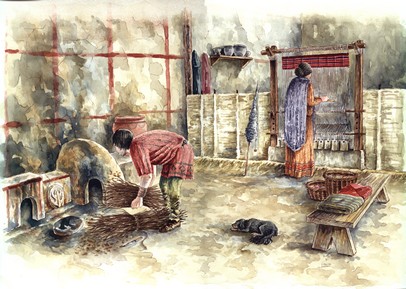
The destructions in Pintia
Seven opportunities in history
Excavations of residential areas in Pintia have not been extensive, limited to a 56 x 8 meter trench. One huge pit, thought to be an abandoned well from the 2nd century A.D., extends down to the bedrock, allowing archaeologists to see seven archaeological layers that were destroyed by a fire during the final five centuries B.C. The layers show how the city was reborn time and time again from its own ashes before Pax Romana was installed.
From aerial photographs, we can see the urban layout in elongated blocks with some houses linked by their facades and open to parallel streets. In the almost 500 open square meters, archaeologists of the CEVFW have identified 12 homes, although unfortunately none of them are intact. This has hindered archaeologists from capturing a complete idea about how the houses looked, but the estimates made suggest that the houses were of many different sizes, with the largest measuring around 100 square meters.

Recreation of a Vaccean house inside
In the smaller houses archaeologists have identified three different areas: entrance, kitchen/dormitory and store room, although in some of the larger homes there are up to seven areas with similar functions. In any case, the separation of these rooms was achieved by simple structures and furniture such as pits, hearths, ovens, large receptacles for storing liquids, weaving weights, etc.
Some of the other more personalized areas are the so-called Banquet Room, a subterranean pantry room used to store food, grain and farm implements and another chamber used for various textile work.

Banquet Room





